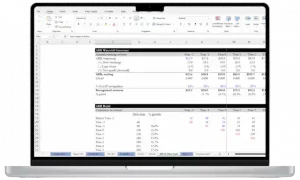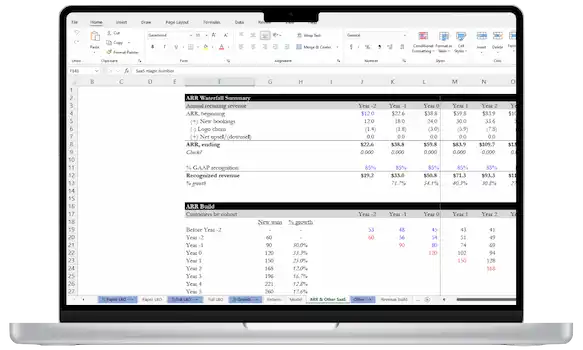Middle market private equity can be a difficult topic to discuss, as people find it difficult to classify what the term “middle market” actually means.
Some people assume that it refers to the amount of capital that a private equity (PE) firm raises. Other people assume that it refers to the average deal size of the private equity firm or even the type of portfolio companies it invests in.
In this guide, I’ll be discussing all of the factors that make middle market private equity unique and worthy of its own designation.
What Is Middle Market Private Equity?
Definition
When defining middle market private equity, I generally believe it’s best to define it based on the average deal size of a private equity firm. This makes everything slightly less confusing, as the other factors can have confounding variables.
So, there’s no exact cutoff, but a good definition for middle market private equity would be firms that acquire companies valued between $50 million and $500 million. These firms mainly focus on operational and growth improvements, but do also use leverage in deals.
Firms take on a lot of debt to finance their investments in middle market companies, and they generate returns through debt pay down.
Common characteristics
While overall deal target size is the best metric to classify a middle market deal, there are many more characteristics that can help us to do even better, such as:
Recruitment
Middle market private equity firms are somewhat less competitive to secure a position with compared to mega funds. If you don’t have experience at an elite boutique bank or bulge bracket bank, you could still land a role at a middle market private equity firm.
Types of deals
Middle market firms make use of leverage in deals, but they make use of other return sources as well. These alternative return sources include margin expansion, bolt-on acquisitions, as well as revenue growth from new product lines and new markets.
Types of portfolio companies
Private equity investors at middle market companies generally choose to invest in smaller family businesses and privately-owned companies. This is because these are the most prevalent companies when the deal size is below $500 million. It’s relatively rare for companies of this size to already be publicly traded.
Location
This isn’t a strict requirement, but I find many of the portfolio companies acquired by middle market private equity firms aren’t too far away from the main headquarters of the firm. An example would be a middle market firm in San Diego only focusing on deals in California.
What Is Considered Upper Middle Market Private Equity?
Once again, there’s no solid definition for upper middle market private equity firms. However, the industry at large generally agrees an upper middle market company usually invests in companies with equity valuations ranging from $500 million to $1 billion.
What Is Middle Market Vs Lower Middle Market Private Equity?
There is no definite, clear distinction between the two. However, generally folks would agree that lower middle market firms usually invest in companies with an equity value between $10 and $100 million.
Plus, private equity firms in the lower middle market mostly generate value through multiple expansion and growth, rather than through leverage. This is because lower middle market firms struggle to finance their deals with debt due to their small size. When a company is smaller, lenders view them as more risky to lend to.
It’s common for middle market firms to focus on software private equity as these software targets have strong business models, are relatively easy to grow, and are more “financeable” by banks.
Top Middle Market Private Equity Firms
Some of the top middle market private equity firms include:
L Catterton
L Catterton has been around since 1989 and has made 250+ investments in growing middle market businesses and high-growth enterprises.
Court Square
Court Square has one of the most experienced teams in the entire private equity industry, and the fact they have completed 240+ investments bolsters this claim.
Wellspring Capital Management
Wellspring Capital Management specializes in middle market private equity. The company seeks to create value in every portfolio company it invests in by providing ongoing strategic, financial, and operational support.
Alpine Investors
Alpine Investors is a prolific middle market private equity firm, having made 300+ investments in its 20+ year tenure. The firm focuses mainly on middle market companies in the software, business services, and consumer services sectors. It operates and has locations in Australia, Europe, Canada, and the US.
JMI Equity
JMI Equity differs from the other private equity firms listed here, as it invests in both lower middle market companies and run-of-the-mill middle market companies. This is because its investments normally range from $20 million to $200 million. Founded in 1992, JMI focuses primarily on investing in software or growth companies.
Altamont Capital Partners
Altamont Capital Partners is a private equity firm that invests in middle market businesses. It primarily invests in companies going through operational or strategic transitions. This is because Altamont is excellent at helping companies get through these changes.
Lovell Minnick Partners
Lovell Minnick Partners focuses heavily on partnering with growth-oriented companies. Its goal is to help middle market business owners scale their companies at an accelerated pace through investment. It has invested in over 50+ companies.

- 66 lessons
- 12+ video hours
- Excels & templates
Why Work In Middle Market Private Equity?
You might be wondering why you should consider working for a middle market private equity firm, instead of a mega fund private equity firm.
Below, I will provide you with some advantages and disadvantages of middle market companies.
Advantages
Hours
Working for large private equity firms can be daunting, as you will sometimes end up working between 80+ hours per week. This will depend on your level within the firm and how busy the week is, but these hours are not uncommon if you are managing a huge private equity fund.
Your working hours will generally be more forgiving at a middle market firm, as you’ll be dealing with fewer, smaller portfolio companies. That said, you should still expect to work quite hard.
Less Hierarchy
Middle market PE firms tend to have much less of a hierarchy and will allow you to have more infludence over a portfolio company and your deals from a young age. This can provide private equity investors with more experience.
Growth potential
Moving up the ladder in a middle market firm tends to be easier than in a mega fund firm. You can usually progress along the private equity career path within a few years if you put your head down and work hard, as there’s more loyalty to reward employers within smaller firms.
Disadvantages
Pay
Unfortunately, if you choose to work at a middle market firm, you won’t earn as much as associates working at mega fund firms. You could earn between 20 and 50% less than someone in the same position as you at a mega fund firm. However, this will ultimately depend on the size of your firm’s fund and its performance.
Reputation & exit options
Firms in the middle market sector aren’t as well known as mega fund firms, so it might be more difficult to find a job at a larger private equity firm further down the line.
Generally, it’s more possible to “trade down” from a large firm to a smaller one, rather than vice versa.
Deal types
In general, the complexity of deals is lower in the middle market because you can’t layer on as much debt or other crazy capital structures. Therefore, the deals tend to take on simpler structures.
Some people may consider this to be a benefit if they don’t like the technical part of the job. However, having less experience in these matters may be one consideration if you’d like to move to a larger firm one day.
How To Get Into Middle Market Private Equity?
Trying to land a middle market PE job is very similar to trying to get any other private equity job. You’ll need a degree from an excellent university, amazing grades, and typically some experience working in either investment banking or management consulting.
Many firms still use private equity headhunting firm, so you may interact with headhunters or apply directly for a position. Middle market firms tend to avoid “on-cycle” recruiting and will only hire when a position needs to be filled.
Even in middle market firms, positions are extremely competitive and you’ll need to prepare for a rigorous interviewing process. You will often be given case studies that you’ll need to take home to work on.
Check out my series on how to get into private equity.
FAQs
What deal sizes do lower middle market private equity companies work with?
Lower middle market companies usually invest in companies with equity valuations ranging from $10 million to $100 million.
Why is the private equity industry focusing on the middle market?
The middle market is so hot right now because there is a lot of money to be made in the sector. These less mature companies are easier to enhance and can provide an excellent return on investment. Also, new managers who raise first time funds typically target the middle market since they can’t raise a large enough fund to target larger companies in their first fund.


 Break Into Growth Equity
Break Into Growth Equity

